Wireless charging technology is derived from wireless energy transmission technology, which can be divided into low-power wireless charging and high-power wireless charging. Wireless charging looks at mystery is not really a new technology. Here's how the mysterious technology of wireless charging is introduced.
In the next few years, a wireless charging technology will become popular in our lives and gradually replace the chargers of various digital products. It can even charge your electric car on the street. Not long ago, the world's first standardization organization to promote wireless charging technology - Wireless Power ConsorTIum announced in Beijing the first wireless charging standard Qi (pronounced as CHEE, meaning "life energy"), the standard has been introduced In China, many mobile phone manufacturers are also very optimistic about the technology, and may use a wireless charger to sell mobile phones in the future, which means that getting rid of the troublesome charging line is just around the corner.
21st century charging methodChina is the world's largest wireless mobile communications market, and the demand for convenient, easy-to-use, interoperable, and compatible wireless charging products will grow at a geometric level. The great potential of the wireless charging industry can also promote Chinese companies to actively participate in and research this market, effectively improving the product breadth and competitiveness of enterprises. The Chinese local BYD company used electromagnetic induction technology as a non-contact inductive charger patent applied in December 2005. And because China has a strong cottage market, it is expected that the development of wireless charging technology in the Chinese market should be rapid. .
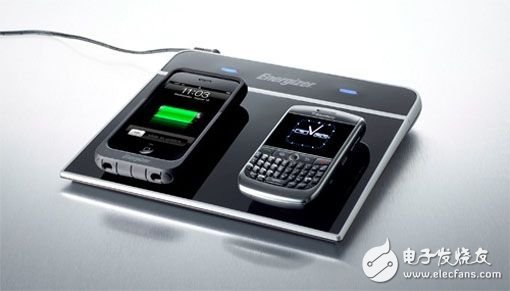
Many mobile phone manufacturers are also very optimistic about this technology, and may use a wireless charger to sell mobile phones in the future.
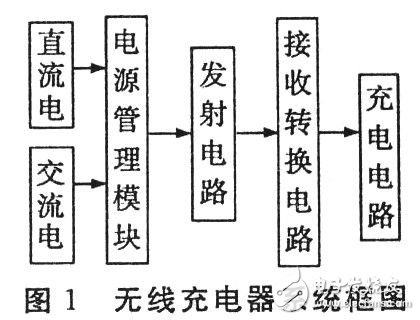
Diagram of the working principle of wireless charging technology.
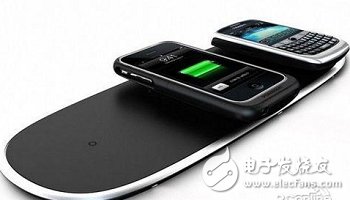
POWERCAST, a technology company that charges radio waves for digital products, has also signed a cooperation agreement with Philips to prepare related products.
Principles of wireless charging: electromagnetic induction, radio waves and nuclear magnetic resonance
The working principle of the wireless charger uses Faraday electromagnetic induction. When the current passes through the coil, a magnetic field is generated. The generated magnetic field forms a voltage. After the voltage is generated, a current is generated, and the current can be charged. The wireless charger is so free from the constraints of the wire. At present, the most common wireless charging solution is mainly: electromagnetic induction, which generates current through the primary and secondary coils to transfer energy from the transmission segment to the receiving end. The solution providers include Splashpower, WildCharge and Fulton InnovaTIon in the United States. the company. Radio waves are another well-developed technology whose basic principles are similar to the ore radios used in the early days. A miniature high-efficiency receiving circuit developed by the company can capture the radio wave energy rebounded from the wall and maintain a stable DC voltage while adjusting with the load. Only one transmitter mounted on the wall plug and a “mosquito†receiver that can be installed in any low-voltage product can convert radio waves into DC power to charge the batteries of different electronic devices within about 1 meter. Another technique that is still under investigation is electromagnetic resonance, and another is laser beam transmission, but the difficulty is that the laser beam requires a fixed channel.
Realize the unified port of the charger
In order to avoid unnecessary waste and generate more e-waste, China is implementing unified standardization of mobile phone charger ports. But for wireless charging technology, this will be the most popular: not only mobile phones can be used, digital cameras, iPone and iPad, notebooks can also share this charging device. Fujitsu of Japan is even preparing to introduce a more advanced technology to expand this success from portable electronics to electric vehicle charging. The ultimate goal of Fujitsu's move is to set up a public "charging point" on the street, enabling a more convenient 24-hour charging service for portable digital devices and electric car users. In addition, wireless chargers are smarter and save energy. Although the performance of the wireless charging device is about 70%, which is equal to the wired charging device, it has a full auto-shutdown function to avoid unnecessary energy consumption. And this performance acceptance rate is constantly improving, and will soon reach 98%.
Wireless charging technology is in the process of mass production just around the corner
The electromagnetic induction solution does not have much mystery in the technical realization. The local Chinese BYD Company used the electromagnetic induction technology as the patent for the non-contact inductive charger applied in December 2005. Philips' latest electric toothbrush also uses wireless charging technology. POWERCAST, a technology company that uses radio waves to charge digital products, has also signed a cooperation agreement with Philips to prepare related products. The research team led by Marin Soljacic, a professor of physics at the Massachusetts Institute of Technology (MIT) mentioned above, named it WiTricity. Since the diameter of the coil used is 50cm, it cannot be commercialized. If the coil size is to be reduced, the receiving power is reduced. Nature will also drop. They expect to eventually develop wireless charging products that are safe for laptops and other devices in the next few years.
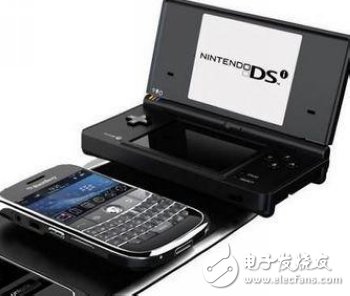
To achieve wireless charging of products such as mobile phones requires two parts: one transmitter and one receiver installed on digital products.
The revolution begins with mobile phonesAfter the wireless charging technology is promoted, people only need one charger to charge all the devices. Moreover, with the continuous promotion of this technology, wireless charging transmitters can be conveniently found in every place where we live, live, and work, and even place charging transmitters in cars, airplanes, hotels, and office locations. This means that people no longer have to carry any wires with them, so they can charge their appliances anytime, anywhere. At the end of this year or early next year, wireless charging receivers will be fully "slimmed" and become a wireless charging receiver chip built into mobile phones, only as large as a fingernail. At present, many internationally renowned mobile phone manufacturers support this technology, and wireless chargers may also be bundled with mobile phones for sale.
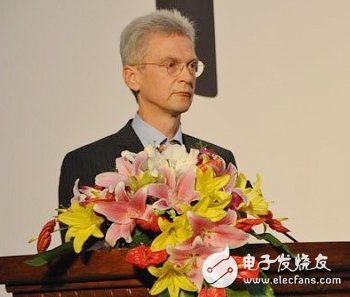
Meno Treffers, chairman of the Wireless Charging Alliance, said that the Qi wireless charging standard uses electromagnetic induction technology to be more efficient.
The phone will have a built-in charging receiver and a unified wireless charging standard
To achieve wireless charging of mobile phones and other products, there must be two parts: the transmitter, which is connected to the power supply and is responsible for transmitting power to the wide space; the receiver is generally installed on the electronic product to receive power. At present, wireless charging technology has begun to be used in mobile phone products. Taking the iPhone as an example, wireless charging manufacturers have modified it to install a similar "apple skin" to enable it to have wireless charging function. "clothes". As a wireless charging receiver, it is currently in the form of adding a mobile phone charging case, but related retrofit products will be available in China this year. Currently known as the "Qi Door", this case supports iPhone and BlackBerry. Users can experience this function without changing the phone. At the end of this year or early next year, wireless charging receivers will be fully "slimmed" and become a wireless charging receiver chip built into mobile phones, only as large as a fingernail. At present, many internationally renowned mobile phone manufacturers such as Nokia, Philips, LG, Samsung, Sony Ericsson and RIM are supporting this technology, and wireless chargers may be bundled with mobile phones for sale.
The key to mobile wireless charging is compatibility, and the Qi standard ensures brand compatibility.
The wireless charging technology mainly uses electromagnetic technology to convert the current into electromagnetic energy in the transmitter, and the mobile phone converts the electromagnetic into a current through the built-in chip receiver to charge the mobile phone. The key to the promotion of wireless charging technology is to ensure that the wireless chargers of various manufacturers can be compatible. The formulation of Qi standard enables wireless charging to have a unified technical specification to ensure the compatibility of the same charger for multiple brands and multiple products. Meno Treffers, chairman of the Wireless Charging Alliance, said that the Qi wireless charging standard uses electromagnetic induction technology, which is more efficient and safer than other technologies. Qi wireless charging standard includes interface, performance and regulations, which will be a big challenge for the popularization of wireless charging technology, so the mobile phone with Qi standard will be able to pass any Qi-certified charging base station, base or other rechargeable. The device is wirelessly charged. Qi's first pre-requisite for the device is no more than 5 watts, which may be a big limitation for some manufacturers who want laptops to pass the same wireless charging technology.
Existing manufacturers have introduced Qi standard wireless charging products, which are widely used in the market.
Energizer (Energizer), the world's largest battery and portable lighting equipment company, recently announced that it will soon launch a wireless charger that supports Qi standard, and first bring a new experience of wireless charging for Apple iPhone 3GS and BlackBerry Blackberry Curve 8900 users. At the same time, data from market research firm iSuppli shows that the wireless charging device market will reach $14 billion in 2013. It is reported that Philips has begun to produce new mobile phones with wireless charging settings.
Wireless charging technology questions to be solvedJust as people now have side effects such as interference and radiation on Wi-Fi wireless signals and cell phone antennas, there are still many security questions about the wireless charging technology that has just emerged. For example, does it generate electromagnetic radiation? There are concerns about usage restrictions and increased price of digital products. For the most core security issues, professionals believe that, in theory, this system is completely harmless to people in the charging field, because the power is only transmitted between coils that resonate at the same frequency; despite the power conversion of wireless chargers The rate is not particularly high, but with the gradual advancement of technology, I believe that one day it will catch up with the straight charger.
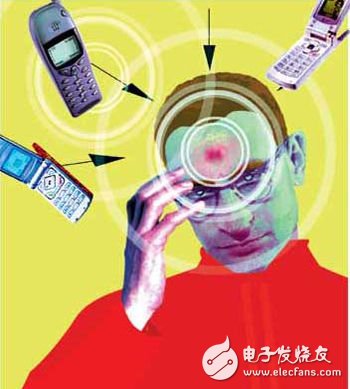
For the safety of electromagnetic radiation of wireless charging technology, experts believe that it is harmless to the human body.
Electromagnetic waves have no authoritative answer to human radiation, and safety still needs to be solved step by step.
The wireless charging system is specific to the security issue and mainly includes two levels. First, how to ensure that electromagnetic waves are only radiated to the receiving part of the mobile phone, without affecting human health or interfering with other equipment; second, let electromagnetic radiation not damage the battery and charger in case of wrong use, such as identifying foreign objects on the wireless charger. To prevent the risk of deformation or explosion caused by overheating of the lithium battery. Experts say that these must be achieved through a large number of hardware and software work. In the market development, there is still a need to gradually transition in stages, and there are still many problems to be solved.
Wireless charging coverage is small, power conversion rate is 30% lower than direct charging
At present, the wireless charger can not reach the coverage of the wireless network. Although the charging board and the receiver are two parts, they cannot be separated too far from each other, otherwise the charging efficiency will drop drastically or even fail to charge. In addition, the conversion rate of wireless charger charging is much lower than that of wired chargers, and the current maximum can only reach 70%. But this is already a very good result. Therefore, although there may be no large-scale popularization at this stage, wireless chargers will become a new development direction. Although the magnetic resonance method is theoretically good, it still encounters a lot of trouble in the actual design. Not only the parasitic capacitance and the external magnetic field, but even the connected device can interfere with the charging electromagnetic field, thus affecting the charging efficiency. In addition, the smaller the device, the more it is affected by external factors, making this technology difficult to apply to mobile phones. Wireless charging technology can only charge small appliances within 2 meters. The researchers hope to increase the effective charging distance to 30 meters.
Wireless charging technology has been used in professional fields before, and it is necessary to ensure the tightness of products, such as underwater equipment and medical devices in the body. But in the face of the huge consumer equipment market, whether this technology in its infancy can convince people to "get rid of the last cable" is still unknown. However, wireless charging technology is still regarded by foreign media as one of the most anticipated high-tech technologies in the 21st century. Its creativity has brought convenience to human life. We believe that technological advancement will make wireless charging more mature and have a broader world. .
KNL5-63 Residual Current Circuit Breaker
KNL5-63 Moulded Case Circuit Breaker is MCCB , How to select good Molded Case Circuit Breaker suppliers? Korlen electric is your first choice. All moulded Case Circuit Breakers pass the CE.CB.SEMKO.SIRIM etc. Certificates.
Moulded Case Circuit Breaker /MCCB can be used to distribute electric power and protect power equipment against overload and short-current, and can change the circuit and start motor infrequently. The application of Moulded Case Circuit Breaker /MCCB is industrial.
Korlen electric also provide Miniature Circuit Breaker /MCB. Residual Current Circuit Breaker /RCCB. RCBO. Led light and so on .
KNL5-63 Molded Case Circuit Breaker,Small Size Molded Case Circuit Breaker,Electrical Molded Case Circuit Breaker,Automatic Molded Case Circuit Breaker
Wenzhou Korlen Electric Appliances Co., Ltd. , https://www.zjthermalrelay.com